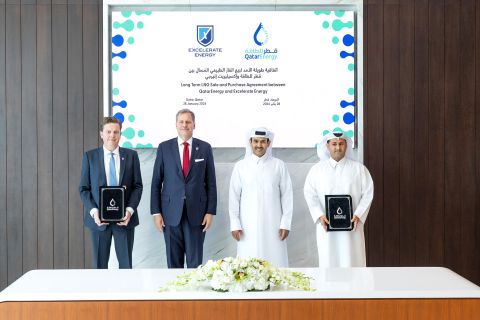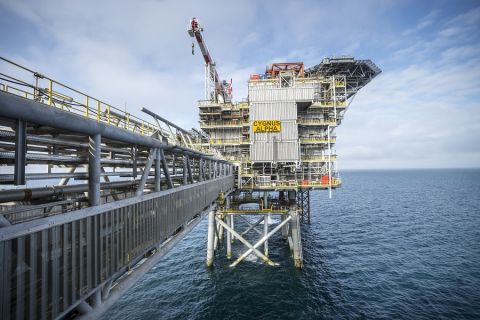After the initial excitement over the increase in value and duration of federal tax credits for carbon capture and sequestration (CCS), the hydrocarbon industry in general—and the midstream sector in particular—are just coming to grips with an entirely different business calculus.
It is not surprising that some midstream operators and investors have been hesitant to get involved. The CCS business model is built on tax credits included in the Inflation Reduction Act of 2022 (IRA) — not the inherent value of the molecules being moved, said Jim Grice, chair of the data centers and digital infrastructure practice at the law firm of Akerman LLP in Dallas. The practice extends to renewable energy and power.
“There is a pro-forma out there that people are running to justify the investment,” said Grice. “The question [for operators or investors] becomes: can we fold this into our existing business model, or do we have to create a separate structure? It’s a complex question because it’s not simply a profit-and-loss equation, but a question about how to integrate a new business into an existing operation.”
Specifically, the IRA tax credits, known as 45Q for the section of the Internal Revenue Code, provide for as much as $85 per metric ton (mt) of “carbon oxide” permanently stored and $60/mt used for EOR or other industrial uses — provided emissions reductions can be clearly demonstrated. Importantly, 2022 changes include a seven-year extension to qualify for the tax credit, meaning projects have until January 2033 to begin construction.
And while there is a global sense of urgency to address climate change, there may not have to be a rush for the 45Q. “Historically, tax credits like these have not been revoked,” Grice said. He also noted that “the IRA created lots of new complexity. There are the base credits, as well as added elements. Those enhancements are intended to encourage use.”
The same is true of the increases in the value and duration of the tax credits. “There has to be a long enough time frame,” Grice said. “The window now looks adequate for those moving now. It gets shorter for those later adopters.”
Grice highlighted how solar-energy developments have long taken advantage of similar programs. “They are in the business of tax credits and have an ability to monetize those. If there is $10 million capital in the stack, $3 million of that can be from the government.”
‘No profits on a dead planet’
Having just returned from the World Petrochemical Conference in Houston, Shah Karim, CEO of industry analytics and advisory firm SafeRock, noted that the hydrocarbon industries are “neck deep” in CCS business considerations.

“It’s the three Ps,” Karim explained. “There are profits, there is the price of carbon that is necessary for market clearing and there are the people. We are trying to preserve the quality of life on Earth. That circles back to profit. There are no profits to be made on a dead planet.”
Beyond those three considerations, time becomes the fourth dimension in the CCS equation. “There has to be a balance of the economic realities in pricing to cover the capital requirements of the short, medium and long term,” Karim said. “We need clarity on how the long-term costs can be stepped down into the short term. How many pennies at the pump are required to cover the cost of CCS at the refinery?”
These are still early days, Karim acknowledged. “Some people say they can’t see a way to get this to a net present value greater than zero. Others are saying they are getting the tax credits now. What matters most is intentional thinking about the pennies, now, that will make it all possible: the capital allocation, the investment purpose and the fiduciary responsibility for the long term.”

For private equity, which is a major source of funding for midstream, “there is an opportunity to deploy capital in large amounts,” said Irving Rotter, partner in the Houston office of law firm Sidley Austin LLP. “In most cases, the $85/[metric] ton tax credit and 12-year duration will meet their needs for economic returns and also mandates for social responsibility.”
Rotter sees opportunities among generators, midstream operators and sequestration sites to be the leader of CCS development. “One example comes from New Mexico,” he related. “The City of Farmington was a prime mover in one proposed project because they had an ownership interest in a large coal-fired facility for which they wanted to retain jobs and the tax base for the town.”
The midstream element is mostly based on distance, Rotter noted. “For the projects that are currently on my desk, there are only plans for pipelines of only 10 or 20 miles. There are some discussions of longer [CO2] pipelines in the Midwest and the Gulf Coast,” which would be of greater interest to a midstream company.
Sequestration projects pending

Brittany Bolen, counsel in the Washington D.C. office of Sidley Austin, added that there is some interest in multi-party CCS hubs, which seems to be the favored approach in Canada. “There have been some proposals announced,” she said, “and the Department of Energy has made significant grants and loans available to such projects with funding under the BIL [Bipartisan Infrastructure Law].”
Most broadly, Rotter underscored that “these projects are tax sensitive and there is need for guidance from the IRS. A lot of eyes are focused on regulatory agencies waiting on details of the regulations.”
The projects currently on his desk, in one stage or another, include proposed facilities in Wyoming and the upper Midwest. With capital less of a concern, “a main driver, or limiting factor, in many situations is the ability to secure Class-6 well permits” for geologic CO2 sequestration, Rotter said. “Wyoming and North Dakota are the only two states with primacy, which makes it easier to get permits, compared to the process with” the Environmental Protection Agency (EPA).
Primacy refers to the EPA granting jurisdiction to state and other governments for underground injection programs.
Bolen noted that Louisiana, Texas and West Virginia are actively seeking primacy, with a few other states still early in the process. “State primacy does make a big difference,” she added, “if only just to reduce the number of permits pending EPA approval. There are currently 24 projects across the country pending before the EPA with Class 6 injection wells.”
For the permits pending before EPA, there does not seem to be any overt reason for delay in approval, or for delegation to those states that want it. “The Bipartisan Infrastructure Law granted funding for state primacy and CCS development,” Bolen said. “I worked at the EPA, and the agency is inclined to delegate to the states that meet the minimum federal requirements.”
Recommended Reading
Excelerate Energy, Qatar Sign 15-year LNG Agreement
2024-01-29 - Excelerate agreed to purchase up to 1 million tonnes per anumm of LNG in Bangladesh from QatarEnergy.
UK’s Union Jack Oil to Expand into the Permian
2024-01-29 - In addition to its three mineral royalty acquisitions in the Permian, Union Jack Oil is also looking to expand into Oklahoma via joint ventures with Reach Oil & Gas Inc.
Permian Resources Continues Buying Spree in New Mexico
2024-01-30 - Permian Resources acquired two properties in New Mexico for approximately $175 million.
Eni, Vår Energi Wrap Up Acquisition of Neptune Energy Assets
2024-01-31 - Neptune retains its German operations, Vår takes over the Norwegian portfolio and Eni scoops up the rest of the assets under the $4.9 billion deal.
NOG Closes Utica Shale, Delaware Basin Acquisitions
2024-02-05 - Northern Oil and Gas’ Utica deal marks the entry of the non-op E&P in the shale play while it’s Delaware Basin acquisition extends its footprint in the Permian.





